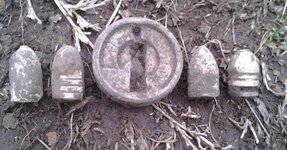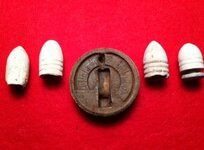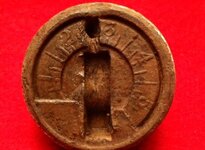Jpro
Sr. Member
We had great weather Saturday which allowed me to search hard and tight here in Nashville.
As always in search of CW relics. Got into a yard that produced this awesome looking Bormann fuse. Numbers and threads are in great shape. They don't come out of the ground in this condition like this much anymore. Was happy to save this one. Some nice dropped bullets too, for added bonus to my day...enjoy.
As always in search of CW relics. Got into a yard that produced this awesome looking Bormann fuse. Numbers and threads are in great shape. They don't come out of the ground in this condition like this much anymore. Was happy to save this one. Some nice dropped bullets too, for added bonus to my day...enjoy.
Amazon Forum Fav 👍
Attachments
Upvote
14









